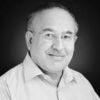Mystic Mantra: The healing power of prayer
Prayer is not only an entreaty to God, but a dynamic dialogue.

“In prayer it is better to have a heart without words than words without a heart.”
— John Bunyan
Prayer is a significant and universal aspect of religion, whether of primitive peoples or of modern mystics. It is considered the most powerful symbol of living religion and the primary and purest medium of expression for the broad range of religious feelings that connect humans with the sacred or holy — God, the transcendent realm. Believers of all faiths agree in recognising the central position that prayer occupies in religion. An Islamic proverb states that to pray and to be Muslim is synonymous.
Prayer is linked to a feeling of presence (of the holy or transcendental), which is neither an abstract conviction nor an instinctive intuition but rather an inspired consciousness towards realising the higher end. Thus, prayer is described not only as meditation about God but as a step, a “going beyond one’s self”, a pilgrimage of the spirit in the sight of God. It is, therefore, a personal and experiential act that goes beyond ordinary perception.
Found in all religions in all times, prayer is not a monologue but an intimate act of frequent and intimate conversations held in solitude with the beloved. Ralph Waldo Emerson considered a prayer, “An emotive response coming from the recesses of a grateful heart”. A prayer connects the person to a higher plane where he can experience the manifestation of divine energy. A true prayer reflects thankfulness for the gifts of life. It’s a manifestation of gratitude. When John Keats says, “The ripening breasts fold hands to the cosmos /To one who has been long in city pent,” he meant a humble expression of profound gratitude to the vast cosmos we are all part of.
To those who believe in a deity, the efficacy of the act of prayer is as much in a response to God as a request to God. It is a dynamic interaction, not just a requiem of silence. The quiet meditation and incantations of praying, or the comfort of being prayed for, is a great salve and soother. Prayer opens the door for our thoughts to become more spiritual and incandescent in order to express our oneness with God, and in the process, enhance our human experience.
There is a rich Jewish tradition that envisions angels carrying human prayers to heaven, and there is a belief that the entreaties of the righteous can more effectively intercede with God than ordinary mortals. As in the Christian and Islamic traditions, there are strict admonitions against worshipping the angelic intercessors. God alone must be the sole and ultimate focus of all prayer.
The Islamic Quran is regarded as a book of prayers, and the book of Psalms of the Bible is viewed as meditation turned into prayer. Thus, because religion is culturally and historically ubiquitous, the absence of prayers would denude a culture of a particularly rich and uplifting aspect.
Prayer is not only an entreaty to God, but a dynamic dialogue. When we frame prayer as merely the recital of demands for favours or a litany of discontent over one’s miseries, the focus of the mind is on the act itself, rather than on acknowledging the power of the one addressed. Prayer should go beyond this just therapeutic mantra. It has to be a theistic believers’ acknowledgement of both the existence and the intervening concern of a deity. As Mother Teresa puts it pithily: “Prayer is not asking. Prayer is putting oneself in the hands of God at His disposition and listening to His voice in the depth of our hearts.”.
